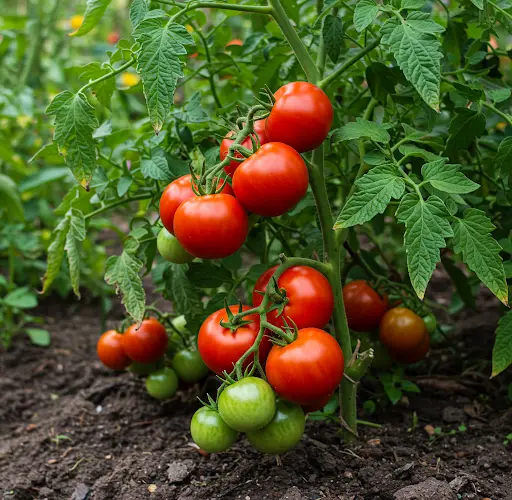A Natural Way to Feed and Protect Your Tomato Plants for a Lush, Healthy Harvest
Tomatoes are one of the most popular and rewarding plants to grow in the home garden. Their vibrant flavor and versatility in cooking make them a staple for gardeners around the world. However, to enjoy a bountiful harvest, tomato plants require not just sunlight and water, but also proper nutrition and protection from common plant diseases.
This article will guide you through effective ways to feed your tomato plants naturally, and introduce a simple, homemade solution to protect them from fungal infections—all using ingredients you probably already have at home.
The Foundation: Good Soil for Tomatoes
Healthy tomato plants start with healthy soil. Tomatoes thrive in well-drained, nutrient-rich soil with good organic content. Before planting, it’s recommended to enrich the soil by adding compost or well-rotted manure. These organic amendments not only improve the soil structure but also provide a steady release of nutrients that tomatoes need throughout the growing season.
Feeding Your Tomato Plants Naturally
Once your tomatoes are growing, ongoing feeding is essential. Tomatoes are heavy feeders and require regular nutrient boosts to support their vigorous growth and fruit production.
Organic fertilizers such as compost tea or liquid organic feeds are excellent for this purpose. These can be applied every two weeks to ensure the plants are receiving balanced amounts of nitrogen (for leafy growth), phosphorus (for root development), and potassium (for flower and fruit production). Potassium, in particular, is crucial during the fruiting phase as it directly influences the size and flavor of the tomatoes.
In addition to regular feeding, make sure your tomatoes have consistent moisture. Inconsistent watering can lead to problems like blossom end rot and cracking of the fruit.
Common Tomato Diseases and How to Prevent Them
Tomatoes can be affected by various diseases, most commonly fungal infections like powdery mildew and blight. Prevention is the most effective strategy when it comes to plant disease management.
Here are a few practical tips:
-
Plant Spacing: Avoid overcrowding. Allow plenty of space between plants to encourage air circulation.
-
Watering Technique: Water at the base of the plant, not over the leaves, to reduce moisture on the foliage, which can encourage fungal growth.
-
Regular Inspections: Monitor plants frequently and promptly remove any diseased or damaged leaves.
Natural prevention methods can be just as effective as chemical treatments, and safer for both your health and the environment.
A Simple Homemade Spray for Tomato Disease Prevention
A particularly effective and easy-to-make natural spray can be used to protect tomato plants from fungal diseases. It requires only a few basic ingredients:
You will need:
-
1 liter of water
-
1 tablespoon of baking soda
-
1 tablespoon of vegetable oil
-
1 tablespoon of mild dish soap (unscented is best)
Instructions:
-
Combine all the ingredients in a spray bottle.
-
Shake well until the baking soda is fully dissolved.
This mixture works in several ways:
-
Baking soda raises the pH on the leaf surface, making it harder for fungal spores to survive.
-
Vegetable oil helps the spray cling to the leaves for better coverage and effectiveness.
-
Dish soap acts as an emulsifier, helping the oil and water blend, and can also suffocate soft-bodied insects like aphids.
Spray the mixture on the leaves of your tomato plants once a week, ideally in the early morning or late afternoon. It’s also a good idea to reapply after heavy rainfall, as water can wash the solution off the leaves.
Final Thoughts
Feeding and protecting your tomato plants doesn’t have to involve expensive fertilizers or harmful chemicals. With simple, natural ingredients like compost, baking soda, and vegetable oil, you can create a supportive environment that encourages healthy growth and strong resistance to disease.
By combining good soil preparation, regular feeding, proper watering, and preventative care, your tomato plants can thrive throughout the growing season—producing juicy, flavorful fruits that are as rewarding to harvest as they are to eat.
Try this method in your garden and enjoy a healthier, more abundant tomato harvest.
Happy gardening!



